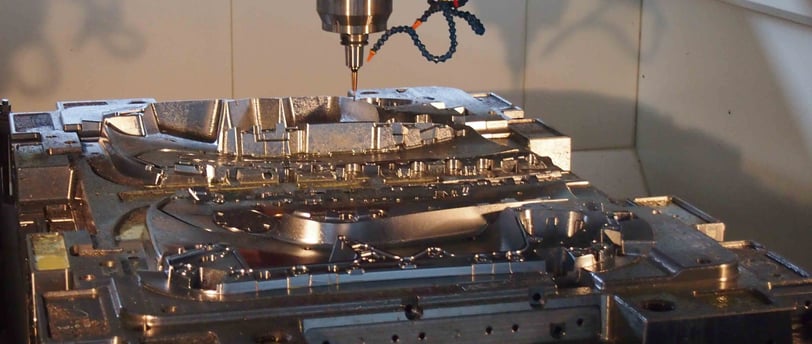How to Reduce the Manufacturing Cost of Stamping Die
1/24/2025


Understanding Stamping Die Cost Factors
The manufacturing cost of stamping dies is influenced by several key factors, each contributing to the overall expenditure. Primarily, the choice of materials plays a crucial role. Stamping dies are often crafted from high-quality tool steels or other alloys that offer durability and precision. The costs associated with these materials can vary significantly depending on availability and specifications. For instance, opting for a premium alloy may enhance the die's performance and longevity but also increase initial costs. Therefore, selecting the right material involves evaluating both upfront costs and long-term operational efficiency.
Furthermore, the complexity of the design significantly impacts stamping die costs. More intricate designs may require advanced machining processes, leading to increased labor and machine time. A simple die may be produced relatively quickly and economically, while a more complicated structure demands a more detailed design, more simulations during development, and often, specialized manufacturing techniques. These additional requirements can substantially elevate production costs and timelines.
Production volume is another critical aspect that influences die costs. Generally, higher production volumes lead to lower per-unit costs, as the initial investment in tooling can be spread over a larger number of pieces. Conversely, low production runs may result in higher costs per unit, as the fixed costs remain constant regardless of output. The industry practice often involves assessing the expected production volume to justify initial tooling expenses effectively.
Labor costs also contribute to the overall expenses. Skilled labor is often required for die design and fabrication, and the wage levels in the manufacturing region can significantly affect total costs. Additionally, indirect labor costs linked to maintenance and reworking dies can escalate if not managed effectively. Lastly, overhead costs, which encompass utilities, manufacturing space, and administrative support, must be factored into the overall budget, bringing all elements together to determine the final cost structure of stamping dies.
Design Optimization for Cost Efficiency
Design optimization plays a crucial role in reducing the manufacturing cost of stamping dies. By focusing on efficient design strategies, manufacturers can significantly decrease the overall expenses associated with die production. An effective approach begins with implementing a modular design, which facilitates the interchangeability of components. This strategy not only streamlines the assembly process but also enhances maintenance, thereby minimizing downtime and related costs.
Another key aspect is the reduction of unnecessary features in the die design. Overly complex designs can lead to increased material usage and labor time, ultimately escalating costs. By critically evaluating the requirements of each component, manufacturers can eliminate extraneous features that do not contribute to the overall function of the die. This simplification can yield substantial savings while maintaining performance standards.
The utilization of computer-aided design (CAD) software is another essential element in optimizing die design. CAD programs allow for precise modeling and simulation, enabling engineers to visualize and analyze the die’s performance before production begins. By leveraging this technology, designers can identify potential issues early in the process, allowing for adjustments that increase manufacturability. Streamlined die geometry can be developed, reducing material waste and enhancing production efficiency.
Moreover, thorough consideration of manufacturability during the design phase can have far-reaching benefits. Implementing design guidelines that prioritize ease of manufacturing, such as appropriate tolerances and realistic material choices, can result in significant reductions in labor time. Simplifying complex geometries not only conserves materials but also minimizes the likelihood of errors during the manufacturing process.
In essence, thoughtful design optimization within the stamping die production process is vital for cost efficiency. By adopting these strategies, manufacturers can achieve substantial reductions in both material usage and labor time, thus lowering the overall production costs while maintaining quality standards.
Material Selection and Management
In the stamping die manufacturing process, the selection of materials is paramount for influencing production costs, quality, and durability. When determining which materials to use, one must weigh the performance attributes and cost implications of various options. For instance, high-strength alloys, while generally more expensive, may offer better wear resistance and longevity compared to standard steel options. This can ultimately lead to reduced maintenance costs and extended tool life, making them a more economical choice in the long run.
In contrast, utilizing standard steel can initially present a lower upfront cost; however, it may require more frequent replacements, leading to higher overall costs throughout the product's lifecycle. Therefore, it is essential to assess the intended application of the stamping die and the materials' compatibility with production requirements. By selecting materials that effectively balance performance and cost, manufacturers can optimize their stamping processes without compromising the quality of the final product.
Effective inventory management is another critical aspect to consider in material selection. By maintaining a well-managed inventory of diverse materials, manufacturers can respond efficiently to production demands while minimizing excess costs associated with overstocking or wastage. Implementing a just-in-time (JIT) inventory strategy can help in reducing holding costs and purchasing materials only as needed, thus preventing capital from being tied up in surplus inventory.
Additionally, collaborating with suppliers to understand material availability and pricing can provide insight into potential cost savings. This collaborative approach can facilitate better negotiation terms, potentially leading to bulk purchasing discounts or more favorable payment terms that further reduce manufacturing costs. Ultimately, suitable material selection coupled with effective inventory management can result in significant cost reductions, enhancing the overall efficiency of stamping die production.
Leveraging Technology and Automation
In the competitive world of manufacturing, reducing costs while maintaining quality is essential for sustainability and growth. One effective approach to achieve this is through the integration of advanced technology and automation in the stamping die manufacturing process. Recent advancements in machining technologies, such as Computer Numeric Control (CNC) machining, have significantly increased precision and efficiency. By utilizing CNC machines, manufacturers can produce stamping dies with greater accuracy, minimizing material waste and reducing production time. This transition from traditional machining techniques to automated systems can lead to substantial cost savings in the long run.
Robotics is another game-changer in the stamping die manufacturing sector. Automated robotic systems can perform repetitive tasks, such as material handling and die assembly, with higher speed and consistency than human operators. This not only enhances operational efficiency but also reduces labor costs. The implementation of robotics can lead to higher throughput and shorter lead times, ultimately contributing to lower manufacturing costs. For instance, companies like Tesla have successfully integrated robotic systems in their manufacturing processes, achieving remarkable improvements in productivity.
Additionally, 3D printing technology has emerged as a revolutionary tool in prototype development for stamping dies. By enabling rapid prototyping, manufacturers can create and test designs much faster than traditional methods. This development reduces the time and cost associated with the design phase, allowing companies to respond quickly to changes in market demands. Several organizations have reported significant reductions in development time after adopting 3D printing technology. For example, Boeing utilized 3D printing to create complex parts for their aircraft, showcasing the technology's potential to decrease both costs and lead times.
Through these technological advancements—CNC machining, robotics, and 3D printing—manufacturers can drastically reduce the costs associated with stamping die production. By embracing automation and technology, companies position themselves for increased efficiency and competitiveness in the market.
